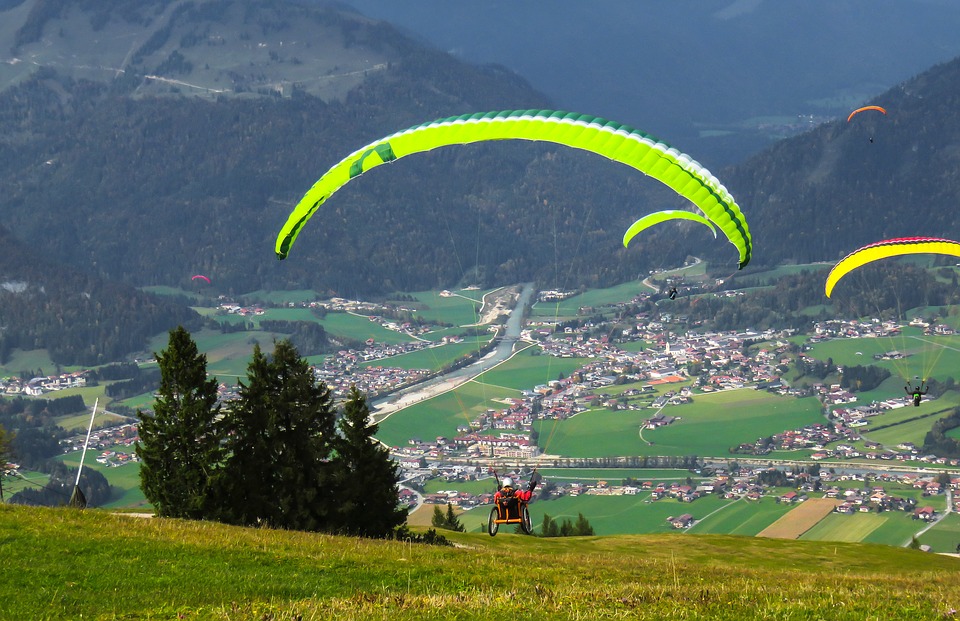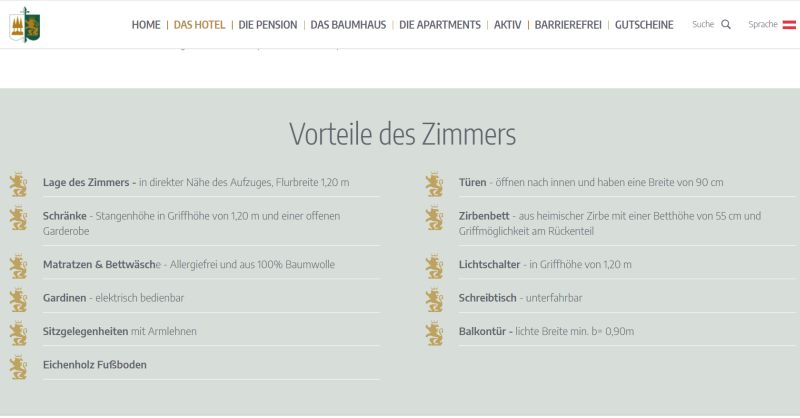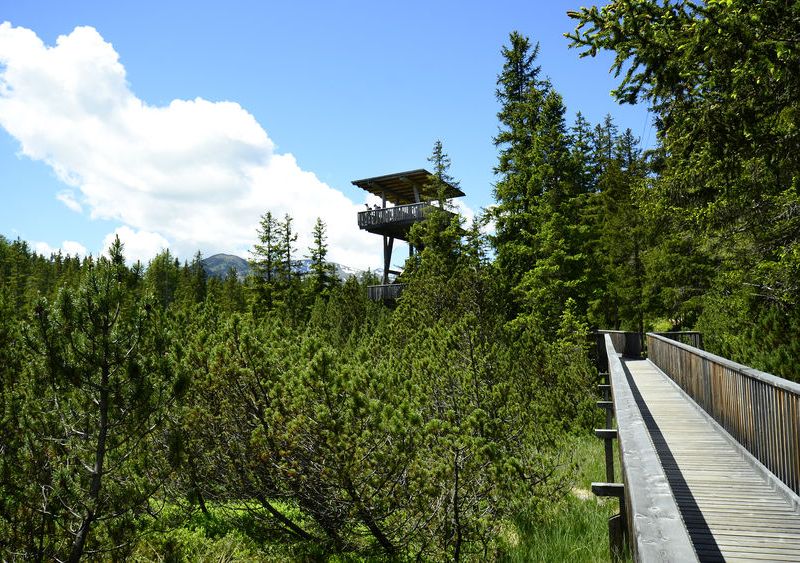Accessible destinations are becoming more and more common. Many tourism experts have long since recognized that people with disabilities are an interesting target group. Of course, nature experiences in the mountains are very popular with everyone, especially with the 50+ generation.
Of course, it’s not enough just to have wheelchair-accessible rooms in a hotel.
For a destination to actually be considered a barrier-free destination, you have to offer more!
Only when the train station, local buses, excursion destinations, mountain railroads, hiking trails and a good selection of restaurants, hotels and stores are accessible without barriers does a destination really become attractive for people with disabilities.
Accessibility of leisure and sports facilities are therefore just as important for accessible destinations as suitable accommodations.

Paragliding is an attractive sport that is also popular with wheelchair users!
A reference “we have accessible rooms” hidden somewhere on the website is not enough.
In truth, it is even counterproductive. Because it actually only shows that you don’t know, what kind of info this target group really needs.
E.g. Is the shower level with the floor? Are there grab bars? Is the access to the balcony threshold-free? The funicular accessible by wheelchair? Do tables in the restaurant have enough space underneath for the wheelchair? Is there a tactile guidance system and information in Braille or audio format? How are people with hearing disabilities alerted in emergency situations? What is the surface and slope of trails? Are there handrails or other orientation aids?
Very accurate and above all honest information is therefore a must for successful accessible destinations! Because detailed information with meaningful pictures creates confidence and saves the guests tedious searching and inquiries.
It is important to provide information about all accessible offers in the area, not only about the own hotel or restaurant. An easy-to-find page on the website of the tourism association, summarizing all barrier-free offers in the region with further links, works very well.

That’s perfect: easy to find in the main navigation, the website of the Hotel Hochfilzer in Ellmau offers all relevant details on accessibility of their rooms.
A perfect example of accessible destinations in the Alps is the Kaunertal Valley in Tyrol. Already at the beginning of the 1990-ies, accessible offers started to be created here. Today, there is a comprehensive offer that not only people with disabilities enjoy, but also young families. Climb up to 3,000 meters with a stroller, experience the high moor with a long stick by means of audio info, visit the viewing platforms and the exhibition in the nature park house with a wheelchair and stop in at the mountain restaurant. This is a vacation for everyone!
Also exemplary is the comprehensive and easy-to-find information on the barrier-free offers on the websites:
Accessible Kaunertal and Kaunergrat Nature Park.
Ellmau and Kitzbühel in the Tyrolean Alps are also considered attractive accessible destinations to enjoy the mountains.
In Carinthia, accessible offers are also becoming more and more.
For example, the UNESCO Biosphere Park Nockberge designs the nature encounter park “Silva Magica” barrier-free:
Easily accessible by wheelchair and equipped with information boards in text AND speech. The biosphere park rangers offer guided tours, for visitors with hearing disabilities they provide written information during the hike.

Stepless, easy to roll on and with stable railings: this makes a hiking trail comfortable and safe for everyone! (Piller Moor in the Kaunergrat Nature Park)
How print media gain more reach with accessiblity
read moreZeroCon23 - THE event for the accessibility topic
read moreWhy Universal Design instead of special solutions is the right approach for inclusion
read moreShowcase of an accessible and inclusive hotel
read moreWhy the 2-senses principle is important and how to implement it
read moreFind out how Siri and Alexa promote sustainability in marketing
read moreWhy the generation 50+ is such an important target group
read moreRead the latest SpeechCode blogs and news on the topics Universal Design, Customer Focus and Digitalisation.
read more